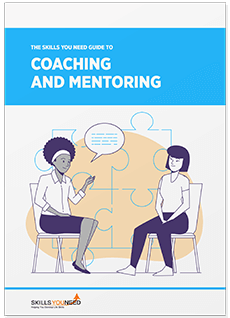Approaches to Counselling
See also: Mediation SkillsThere are a number of different approaches used by professional counsellors. Perhaps the three main approaches are psychodynamic, humanistic and behavioural. Each of these has a different theory and ideas underpinning it, and the therapists and counsellors using each will approach problems and issues in different ways.
These three main approaches each support a number of individual therapies. Some therapies may also use ideas from more than one approach. Some professional counsellors use only one approach, but others are more flexible and might use techniques from more than one method.
Can a little knowledge be a dangerous thing?
Untrained people may possess and develop some skills that are desirable to a counsellor. However, if you are regularly required to provide counselling in your work or personal life, you should undertake a recognised professional counselling course. It is possible to do more harm than good through a little knowledge.
You may also be interested in our introductory page – What is Counselling?
Psychodynamic Approach to Counselling
Psychodynamic counselling evolved from the work of Sigmund Freud (1856-1939). During his career as a medical doctor, Freud came across many patients who suffered from medical conditions which appeared to have no ‘physical cause’.
This led him to believe that the origin of such illnesses lay in the unconscious mind of the patient.
Freud therefore started to investigate the unconscious mind, so that he could understand his patients and help them recover. Over time, many of Freud’s original ideas have been adapted, developed, disregarded or even discredited. They have therefore been used in a number of different schools of thought and practice. Psychodynamic counselling is based on Freud’s idea that true knowledge of people and their problems is possible through an understanding of three particular areas of the human mind.
These areas are:
The Conscious – things that we are aware of, including feelings or emotions, such as anger, sadness, grief, delight, surprise, and happiness.
The Subconscious – these are things that are below our conscious awareness but fairly easily accessible. They may include, for example, events that we have forgotten, but will easily remember when asked an appropriate question.
The Unconscious – this is the area of the mind where memories have been suppressed and is usually very difficult to access. Such memories may include extremely traumatic events that have been blocked off and require a highly skilled practitioner to help recover.
Freud's main interest and aim was to bring things from the unconscious into the conscious. This practice is known as psychoanalysis. Psychoanalysis is used to encourage the client to examine childhood or early memory trauma to gain a deeper understanding of events. This in turn may help the client to release negativities associated with these earlier events. Psychoanalysis is based upon the assumption that we can only progress psychologically by becoming aware of earlier dilemmas that have been repressed into our unconscious because of painful associations.
Freud maintained that the personality consists of three related elements:
The Id is the part of our personality concerned with satisfying instinctual basic needs of food, comfort and pleasure. It is therefore present from (or possibly before) birth.
The Ego is defined as “the realistic awareness of self”. It is the logical and common sense side to our personality. Freud believed that the Ego develops as the infant becomes aware that it is a separate being from its parents.
The Superego develops later in a child’s life, from about the age of three. The Superego curbs and controls the basic instincts of the Id, which may be socially unacceptable. It therefore acts as our conscience.
Freud believed that everybody experiences tension and conflict between the three elements of their personalities. For example, desire for pleasure (from the Id) is restrained by the moral sense of right and wrong (from the Superego). The Ego balances the tension between the Id wanting to be satisfied and the Superego being over strict.
The main goal of psychodynamic counselling, therefore, is to help people to balance the three elements of their personality so that neither the Id nor the Superego is dominant.
It is rooted in exploring and understanding past experience to identify repressed issues that are affecting current behaviour. Psychodynamic counselling is therefore a long and ongoing process, and is mainly used when people are experiencing severe problems that are not resolved using other methods.
Humanistic Approach to Counselling
Humanistic counselling recognises the uniqueness of every individual.
It assumes that everyone has an innate capacity to grow emotionally and psychologically towards the goals of self-actualisation and personal fulfilment.
Humanistic counsellors work with the belief that problems are not caused by life events themselves, but how we experience them. Our experience, in turn, will affect and be affected by how we feel about ourselves, influencing self-esteem and confidence. The humanistic approach to counselling therefore encourages the client to learn to understand how negative responses to life events can lead to psychological discomfort. The approach aims for self-acceptance of both negative and positive aspects of our characters and personalities.
Humanistic counsellors therefore aim to help clients to explore their own thoughts and feelings and to work out their own solutions to their problems.
This is very similar to the approach used in coaching, except that coaches are more focused on the present, and less on the past. In essence, coaching aims to address the issue of ‘how’, and counselling looks at ‘why’.
For more about the differences between coaching and counselling, see our page What is Coaching?
The American psychologist, Carl Rogers (1902-1987) developed one of the most commonly used humanistic therapies, client-centred counselling. This encourages the client to concentrate on how they feel at the present moment, this is also the essence of mindfulness.
Client-Centred Counselling
The central theme of client-centred counselling is the belief that we all have inherent resources that enable us to deal with whatever life brings.
Client-centred therapy focuses on the belief that the client—and not the counsellor—is the expert on their own thoughts, feelings, experiences and problems. The client is therefore the person most capable of finding appropriate solutions. The counsellor does not suggest any course of action, make recommendations, ask probing questions or try to interpret anything the client says. The responsibility for working out problems rests wholly with the client. When the counsellor does respond, their aim is to reflect and clarify what the client has been saying.
A trained client-centred counsellor aims to show empathy, warmth and genuineness, which they believe will enable the client's self-understanding and psychological growth.
Empathy involves being able to understand the client’s issues from their own frame of reference. The counsellor should be able to accurately reflect this understanding back to the client. You may also be interested in our pages: What is Empathy? and Types of Empathy.
Warmth is to show the client that they are valued, regardless of anything that happens during the counselling session. The counsellor must be non-judgmental, accepting whatever the client says or does, without imposing evaluations.
-
Genuineness (sometimes termed congruence) refers to the counsellor's ability to be open and honest and not to act in a superior manner or hide behind a 'professional' facade. You may be interested in our page on Truthfulness.
Behavioural Approach to Counselling
The behavioural approach to counselling focuses on the assumption that the environment determines an individual’s behaviour.
How an individual responds to a given situation is the result of past learning, and usually behaviour that has been reinforced in the past. For example, suppose that a child picked up a spider and took it to their mother. If she was frightened of spiders, she might scream. The child would then learn that spiders are frightening. Next time, instead of picking up the spider, the child will probably scream and run to their mother, who may say ‘ooh, I hate spiders, they’re so creepy’, reinforcing the child’s behaviour. As a result, the child may develop a fear of spiders and run away screaming (response) at the sight of a spider (stimulus).
Behavioural therapies evolved from psychological research and theories of learning concerned with observable behaviour, i.e. behaviour that can be objectively viewed and measured.
Behaviourists believe that that behaviour is ‘learned’ and can therefore be unlearned.
Behaviour therapy focuses on individual behaviour and aims to help people to modify unwanted behaviours. Unwanted behaviour is defined as an undesired response to something or someone in the environment. Using this approach, a counsellor would identify the unwanted behaviour with a client and together they would work to change or adapt the behaviour.
Problems which respond well to this type of therapy include phobias, anxiety attacks and eating disorders.
Clients might be taught skills to help them manage their lives more effectively. For example, they may be taught how to relax in situations that produce an anxiety response. Another method involves learning desirable behaviour by watching and copying others. In general, the behavioural approach is concerned with the outcome rather than the process of change.
Using Different Counselling Approaches
These three broad approaches to counselling each underpin a number of individual therapeutic approaches.
For example, humanistic therapies include gestalt therapy, transactional analysis and transpersonal therapy, as well as client-centred therapy.
However, some counsellors and therapies may draw on more than one of these three approaches. For example, neuro-linguistic programming (NLP) is a combination of cognitive behavioural and humanistic thinking. It combines the idea that your behaviour is affected by your past experiences with the belief that you can change your behaviour by changing your emotional response to events, through the use of reason. This is clearly rooted in the concept that each of us has the capacity to solve our own problems.
Therapies like art therapy, family therapy and creative therapy may all draw on ideas from any or all of these approaches, depending on the counsellor and client’s preferences.
There is, in other words, no ‘one size fits all’ when it comes to counselling.
Further Reading from Skills You Need
The Skills You Need Guide to Coaching and Mentoring
Coaching and mentoring require some very specific skills, particularly focused on facilitating and enabling others, and building good relationships. This eBook is designed to help you to develop those skills, and become a successful coach or mentor.
This guide is chiefly aimed at those new to coaching, and who will be coaching as part of their work. However, it also contains information and ideas that may be useful to more established coaches, especially those looking to develop their thinking further, and move towards growing maturity in their coaching.
Continue to:
What is Counselling?
Becoming a Counsellor


